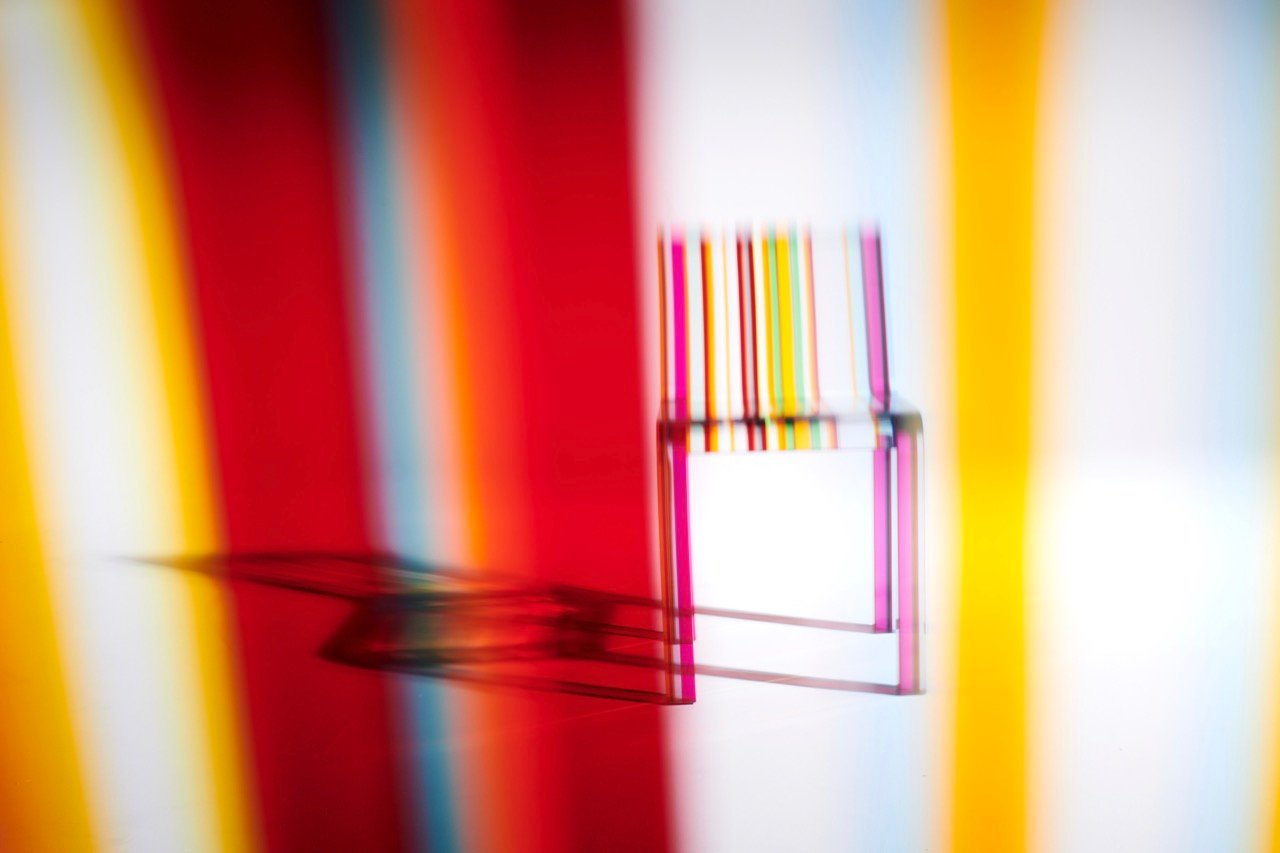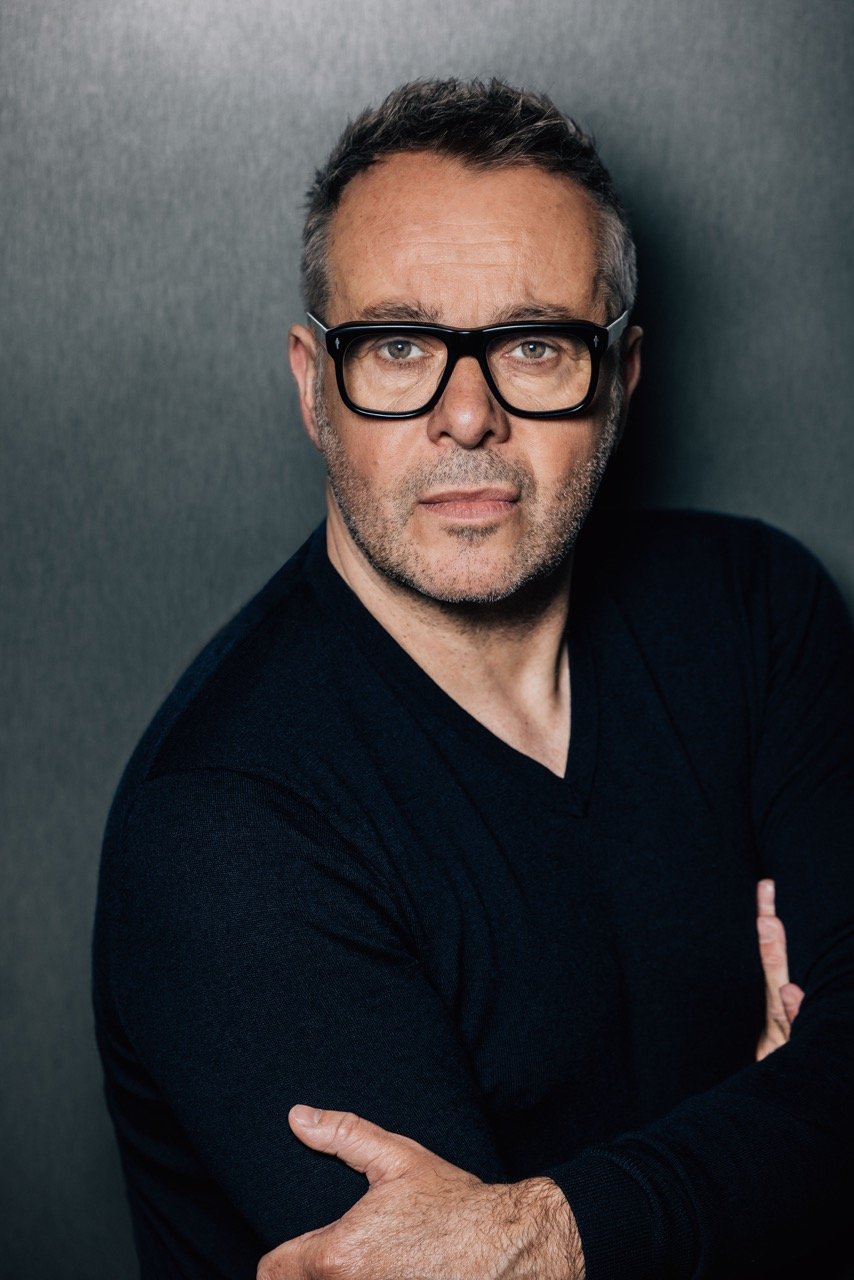Patrick Norguet: Designing furniture for performance
An Interview with Patrick Norguet By Ollimono Magazine | 14 August 2025
When Patrick Norguet talks about design, there’s no rush to impress you with flashy phrases or big-name drops. If you did your research, you’d already know all of that… Instead, there’s a quiet confidence, a sense of someone who’s been doing the work long enough to know that what lasts isn’t noise, it’s intent.

“I’m a French-born designer and entrepreneur based in Paris,” he says simply, “My job is to think about and design products for brands that make sense.”
That understatement hides a career of collaborations with some of the most respected names in design and beyond (Louis Vuitton, Lanvin, Guerlain, Christian Dior, Cassina, just to name a few), as well as pieces that have found their way into the permanent collections of museums like MoMA and not to forget, numerous prestigious awards and recognitions: from Designer of the Year at Maison & Objet Now! and GQ Hommes, to features in Wallpaper Power 200.
Despite all of the above, Norguet doesn’t dwell on prestige. For him, design is about connection between the object and the person, between craft and purpose.
In this original interview based article, we will dive into how Patrick Norguet approaches sports furniture design and creates for high-performance.
“I would replace the notion of performance with the notion of demands”
Norguet grew up surrounded by the layers of French history: Jeanne d’Arc, the Renaissance, the stories of brands, inventions, and the objects that shape daily life. Drawing became his way to understand and navigate the world, and eventually, it led him to study industry for its logic and precision before moving into design school to develop his creative sensibility.
“I’m not looking for performance in my work,” he says. “I leave that term to the world of sport. My work is guided by rigour and exacting standards.” That rigor shows in everything from the sweep of a chair’s curve to the way materials meet without excess or fuss.
Picture Credit: The ACE Collection, Courtesy of Patrick Norguet
The ACE Collection — sport meets design
The ACE Collection grew out of what seems, in hindsight, an obvious gap: outdoor sports spaces were missing design that truly served athletes. “Roland Garros’ tennis players sit on uncomfortable seats, a towel under their buttocks so they don’t get burnt on the sheet metal seats… I wanted to propose a cross-disciplinary collection to meet the needs of several sports.”
Launched in 2022 in collaboration with Ethimo, ACE collection is a smart, sports furniture design system created specifically for outdoor athletic environments, from tennis courts and pools to training facilities and luxury resorts.
At its core is a configurable bench system that can be tailored with accessories like shoe racks, bag holders, cork trays, aluminum bottle containers, and even an umpire’s chair. These additions layer flexibility onto a base that’s simple to install and easy to adapt to varied needs.
Crafted from natural teak and durable aluminum, ACE collection sports furniture design is built for long-term outdoor use. The cork elements are 100% natural and ecological, while the aluminum is available in finishes like Black Red, Moss Green, Coffee Brown, and Warm White — tones that allow the pieces to integrate elegantly into their surroundings.
As Norguet himself puts it, “We wanted to give a new interpretation to the design and comfort… a system with a clean and elegant design to satisfy the most diverse needs”.
The result is modular, weather-resistant, and above all, human-centred. “The idea behind ACE collection is to offer an island, almost a habitat of autonomy, that brings together the needs and functions required by the athlete during a competition.” It’s also adaptable, equally at home in a poolside hospitality space or a high-performance training facility.

“My eyes are like sponges”
Ask what Patrick Norguet notices first when walking into a room and he doesn’t hesitate: “The light. Light is the basis of many things.” Then comes the constant absorption of details: proportions, surfaces, the way people interact with their environment.
Collaboration, he insists, is essential. “Beautiful people inspire you and often push you to go further. To succeed in a quality project, the human dimension is important.”
“Start from scratch” Many of Norguet’s designs have a focused calm. “I have no intention whatsoever, apart from finding the best answers to the questions I’m asked… Each new project is a way for me to start from scratch, without reusing what I’ve already learned.”
That openness to new approaches means his work shifts with the context. A cap for Nike will never feel like a cap for Adidas. Even in projects for teens, like the Dan chair for Zanotta, the tone is tuned to the lifestyle of the user.
What about sports?
“I love the subject of cycling, for example, where man and machine evolve together thanks to technology. Look at the design of a professional bike: every year the design evolves thanks to this quest for performance… Rigour and human intelligence at the service of the athlete.”
That said, sport isn’t just a design reference for Patrick Norguet, it’s part of his life. He rows, skis, and misses the outdoor sports he can’t easily practice in the city. “Sport is a way of taking time just for me, of listening to my body and also of pushing back my limits,” he says.
“A life as an actor, not a spectator”
If Patrick Norguet could design for any athlete, it would be a racing car driver. “I love speed and mechanical sports… the search for the perfect trajectory.” His own creative “training” comes from encounters, environments, and contrasts. “Without contrast I get bored,” he says, preferring mountains to beaches and silence to soundtracks when it’s time to focus.
He speaks warmly about objects that age gracefully, like Louis Vuitton and Cassina leather chaise longue, which grows nobler over time.
As for a high-performance life? “A life as an actor, not a spectator. Let’s give ourselves the means to realise our dreams. Then life becomes more exciting.”